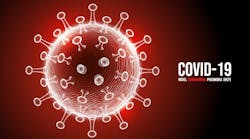PureTech Systems releases the newest version of its PureActiv geospatial video management and video analytics software. PureActiv 14 adds a deep learning video analytics module, a dashboard for monitoring the health condition of the system and connected peripherals, increased location based intelligence and an improved alarm work flow. The release also contains feature improvements, bugs fixes and third party sensor integrations.
Key features of the PureActiv 14 release include:
- Map-Based Threat Assessment – The PureActiv map-based GUI provides a user interface with a high level of situational awareness. The newly added map-based threat assessment feature correlates track data from multiple sensors (video analytics, radar, buried acoustic) and analyzes the data based on various geolocation aspects, including location, track, speed and object type in order to better assess the target, minimize false alarms and declutter the real-time display of tracks on the GIS map.
- Deep Learning – The use of neural network software to evaluate scenes has proven effective for many types of video analytics scenarios. PureActiv 14 now includes a deep learning capability, which can be applied to recognize specific objects in the video scene to enhance object classification, decrease nuisance conditions, and improve detection accuracy.
- Health Monitoring Dashboard – PureActiv communicates with all connected surveillance system components such as cameras, radars, and fence sensors. The new health monitoring dashboard included in the latest software release provides a health summary of all of the connected surveillance system components. The dashboard indicates the current health of monitored software, hardware, sensors and inter-component communications using red, yellow and green indicators. These status alerts can then be used to quickly identify hard‐to‐find system problems and rapidly address the root cause of failures.

